The user feedback form is one of the most valuable tools available to listen to what your customers have to say. But, getting customers to fill out the form to the end is easier said than done.
Too many questions? Wrong. Too little – even worse. So, what is the ideal approach for creating a user feedback form that works?
If you're looking for some fresh ideas, check out these 10 examples of user feedback forms. Have fun designing! (We'll do our best to make it so)
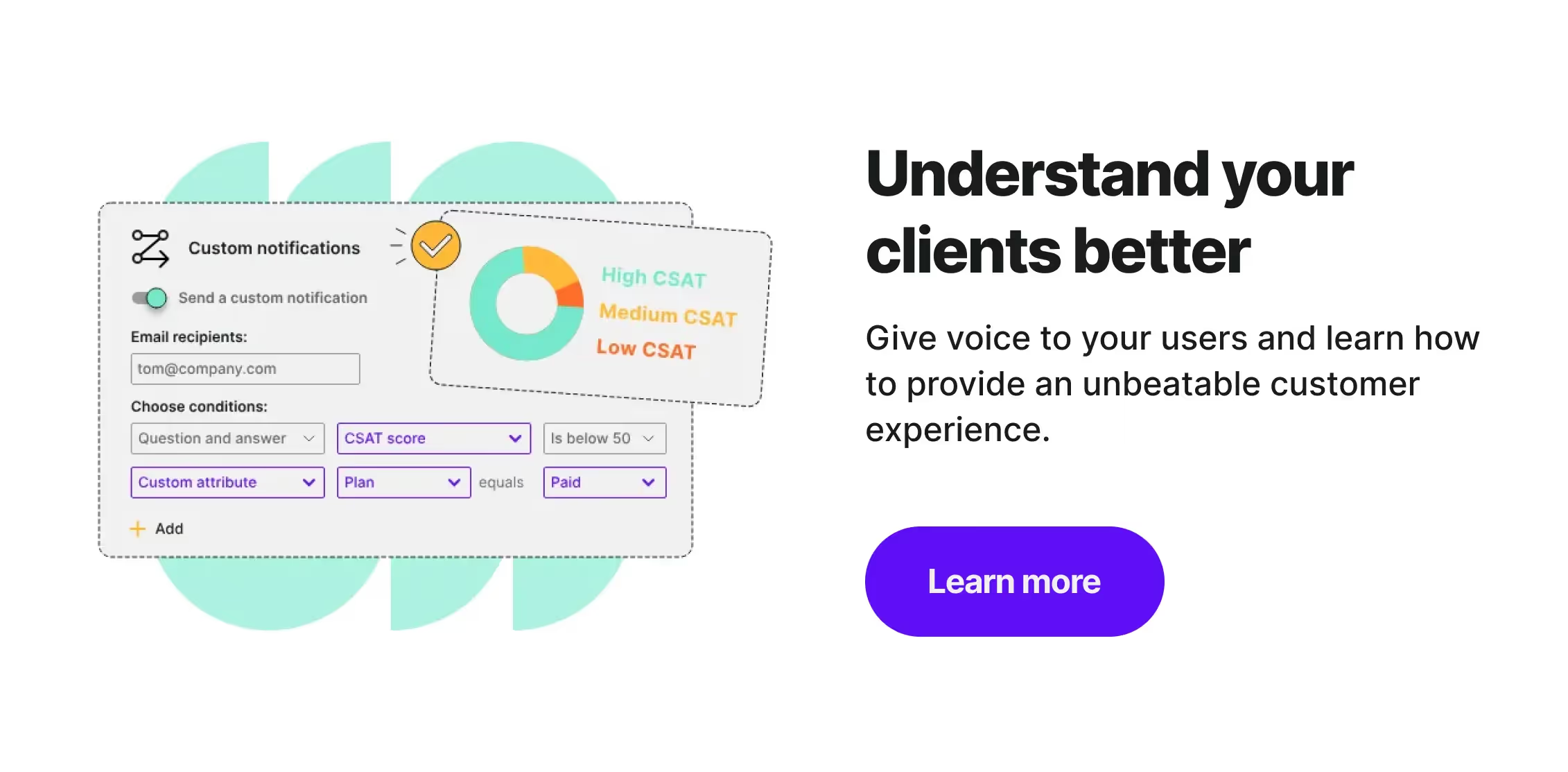
What is a user feedback form?
To make things clear - don't let the name fool you. The feedback form is not only for complaints or criticizing someone's work. It can also be used to show appreciation, make suggestions, and – of course – report bugs.
The feedback form is one of the most critical communication channels between you and your customers. It's a way to show that you care about the customer experience and are constantly striving to make your product or service better.
Simply put:
The user feedback form is a must-have for any business that wants to stay relevant and customer-oriented.
Among them is yours.
Types of user feedback forms
In general, user feedback forms come in all shapes and sizes. Some are short and to the point, while others are more comprehensive. They can also vary depending on the method of gathering feedback.
Some are more intrusive (like pop-ups), while others are more subtle (like a link in the footer). There is no single best choice. It all depends on your business, your product, and your customers.
That being said, let's take a look at a few basic types of surveys and user feedback forms.
Pop-up forms
Pop-ups are one of the most common types of user feedback forms. And there's a good reason for that – they're effective. A well-designed pop-up can be hard to ignore (in a good way). Plus, they're relatively easy to implement. All you need is a bit of code, and you're good to go.
The downside of pop-ups is that they can be intrusive and annoying for some users. If not done right, they can quickly turn people off. So, if you're thinking about using a pop-up form, make sure to use it carefully and design it in a way that will not irritate your users.
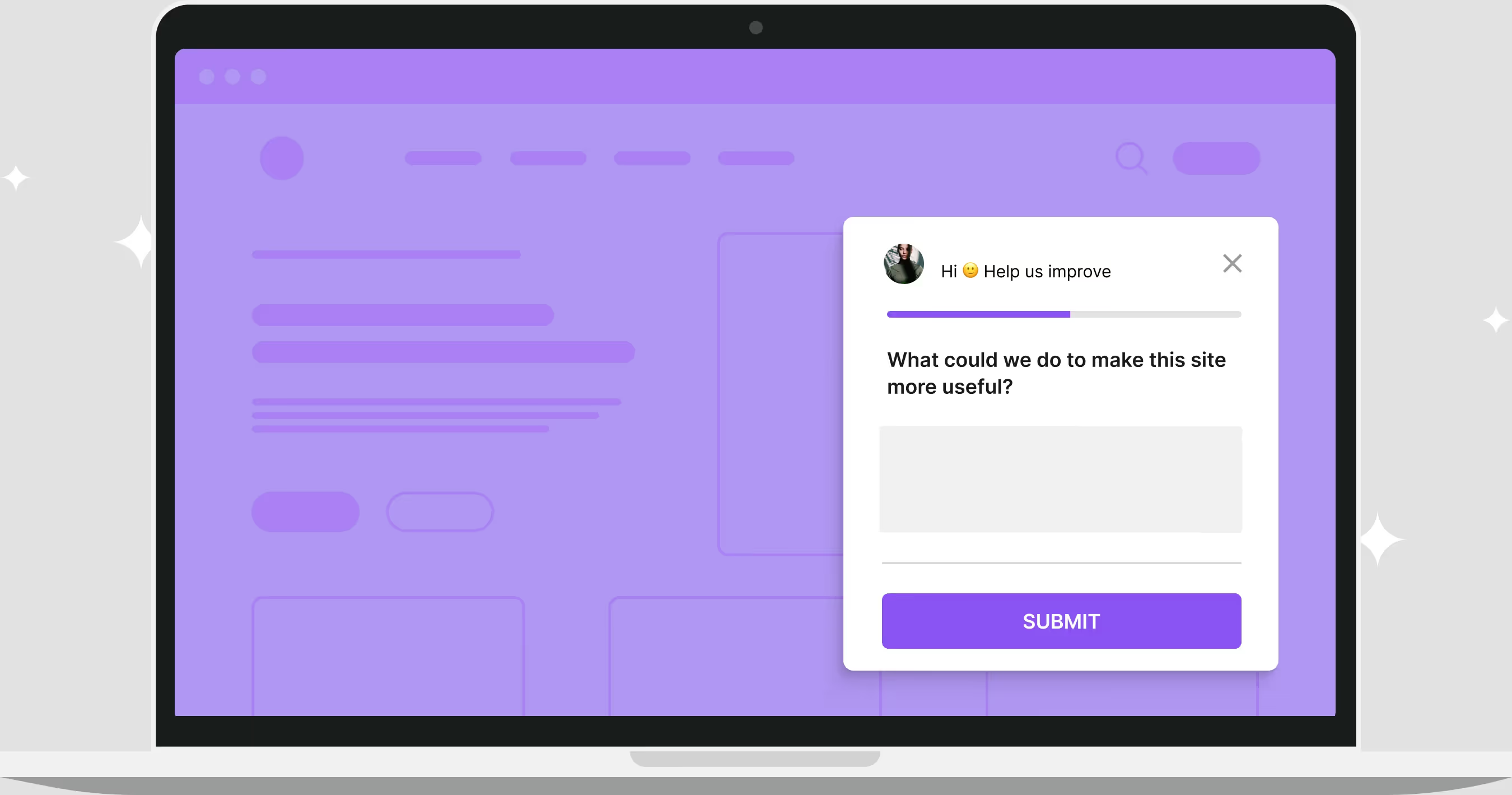
Embedded forms
Embedded forms are those that are integrated into the content of your site or app.
As one that you can find on the IKEA website:
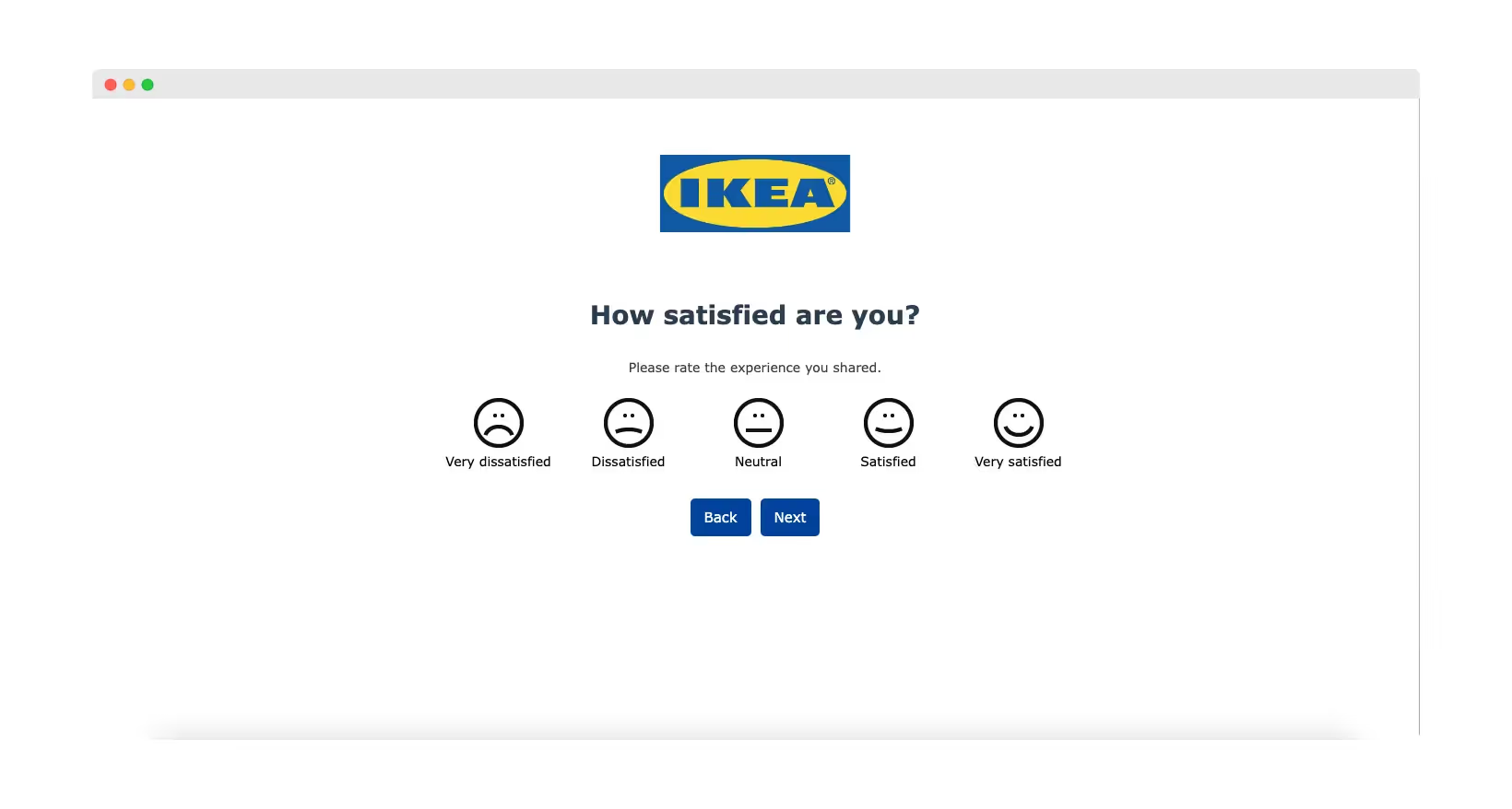
Unlike pop-ups, they're not disruptive and can be easily ignored if the user is not interested.
They're often used for surveys and questionnaires that require more than just a few answers. Because in-line forms are not as visible, they may have lower conversion rates. But, if you're looking for detailed feedback from your users – this user form type will work.
In-app forms
In-app forms are built directly into your product, making it easy for customers to give feedback while using it.
They are very convenient for customers. They don't have to go out of their way to fill out the form and can do it at their own pace.
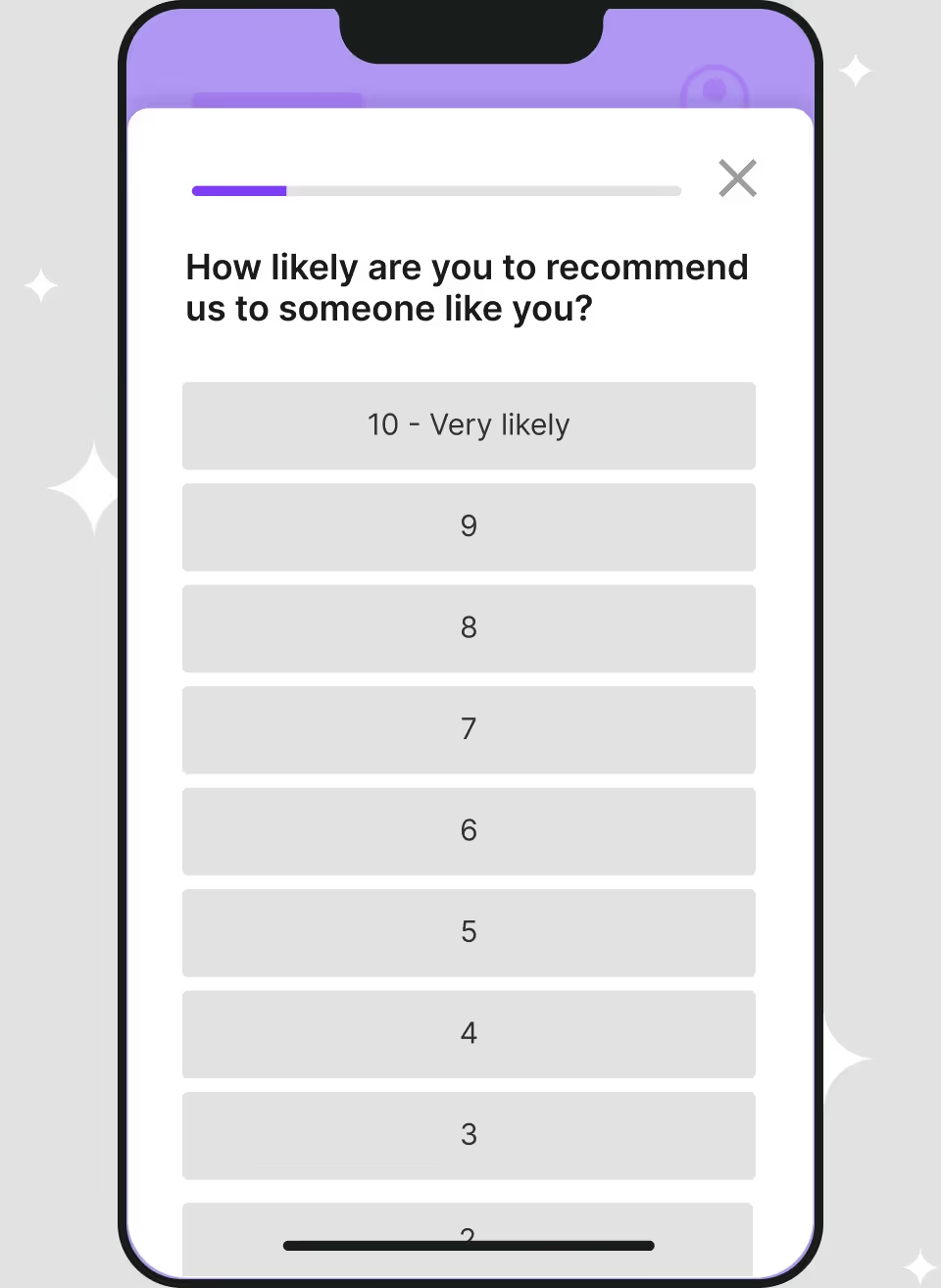
Live chat forms
You can collect customer feedback from your customers in real-time through live chat forms. The process is very immediate and personal. Answering questions is quick and easy, and there's no need for additional steps.
💡 You can easily integrate Survicate with Intercom and get real-time feedback while chatting with your customers.
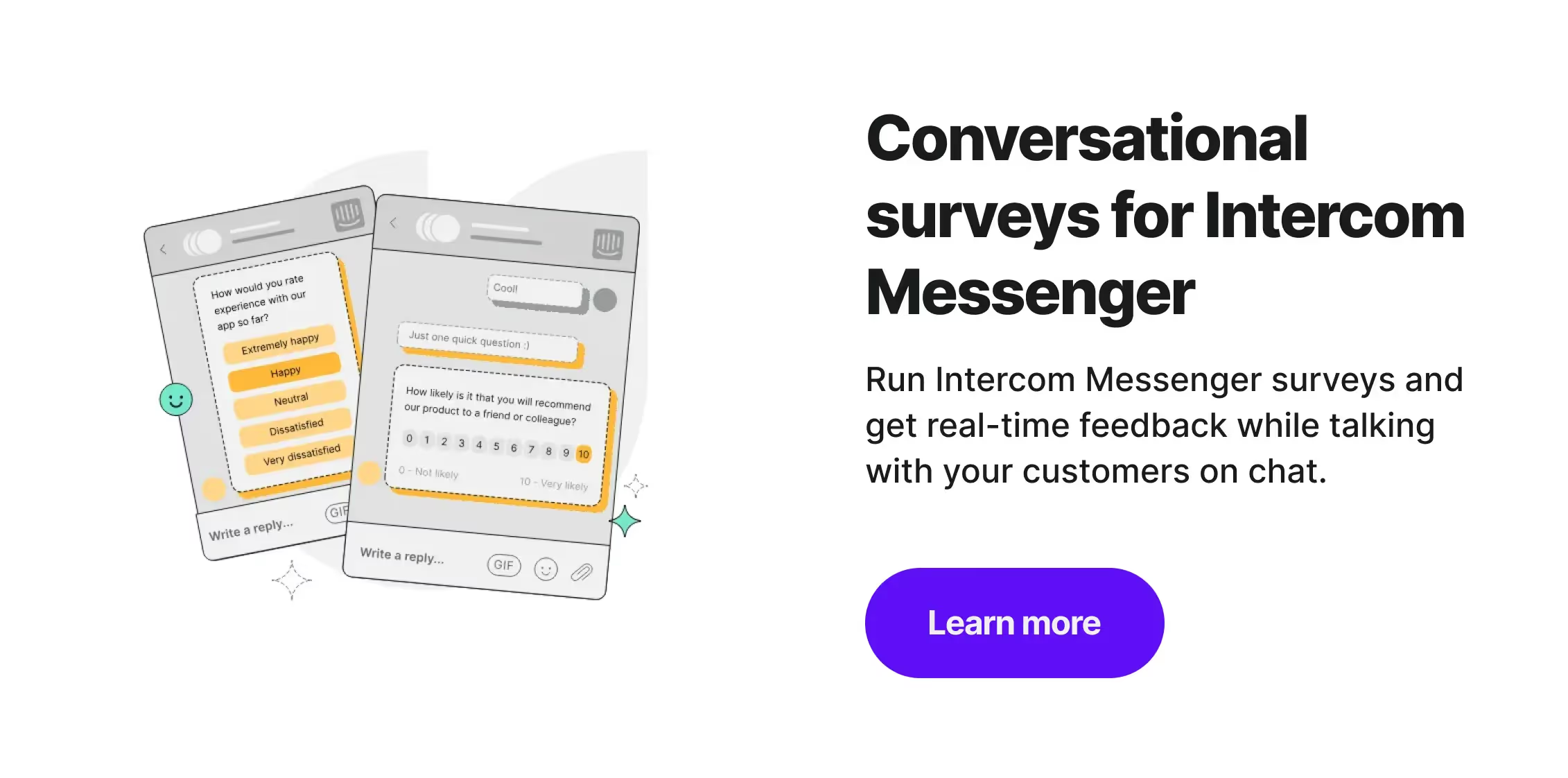
Email forms
It's a polite message with a feedback form that lands in your customer's inbox. It's not offensive, and you can use it to gather valuable feedback without annoying your users. The key – inventing the subject line that will make the user open the email.
What's the best – email feedback forms can be sent to specific groups of users (like those who have used a particular feature or made a purchase).
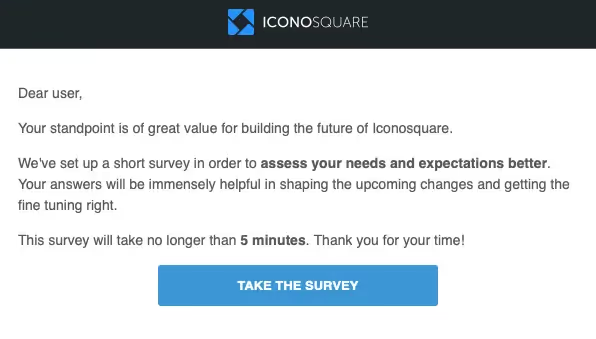
User feedback form examples
We won't leave you alone with the theory without giving you some feedback form examples.
Identify the one that best suits your needs.
Example 1: User experience feedback form
The results of this customer feedback survey can be used to improve your business, product design, usability, and satisfaction. Also, you can track trends over time and see if your changes are affecting the quality of service you provide.
The purpose: Improving customer satisfaction and reducing churn
User experience form template:
Example 2: Net Promoter Score (NPS) form
Net Promoter Score survey is a online questionnaire you can use to measure customer satisfaction and loyalty. It is calculated on a scale from 0 to 10. The survey asks customers how likely they are to recommend a company's products or services to a friend or family member.
There are three categories of customers based on their satisfaction scores: promoters (9-10), passives (7-8), and detractors (0-6).
The purpose: To analyze customer loyalty and predict business growth
Example 3: Customer Satisfaction (CSAT) form
Businesses use customer satisfaction surveys to identify areas for improvement and learn what customers think about their services. Typically, the form includes questions about the product or service itself, customer service, and overall satisfaction.
The purpose: To improve customer service, increase sales, and reduce churn
Customer Satisfaction survey template:
Example 4: Customer Effort Score (CES) form
CES questionnaire is used to evaluate how easy customers use a product or service is. The questions focus on customer effort, not satisfaction.
The higher the score, the easier it is for customers to use your product, and the more likely they will continue using it. When your product scores low, customers may find it challenging and stop using it.
The purpose: To make the product easier to use and increase retention rate
Example 5: User Activation form
A user activation survey is a form sent to people who have started using your product but haven't reached the "click" yet (the moment where they fully understand its value and can't imagine living without it).
It's a way to discover what's preventing them from fully engaging with your product and becoming paying customers.
The purpose: To fix the user activation rate and improve return on investment (ROI)
Example 6: User satisfaction with features form
If you are thinking about implementing some new feature or want to know how well your users like the existing ones, then use this feedback form. It will indicate what you should develop, what the customers are missing the most, and what you can do to improve the user experience.
The purpose: To get feedback on a specific product feature, to prioritize features and product development
Example 7: User motivations form
It is always good to know what drives your customers. Thanks to the user motivation feedback form, you will be able to discover new marketing opportunities and learn more about the needs and wants of your target group.
The purpose: To get to know the target audience better, successfully communicate your unique value proposition (UVP), improve the product, and increase sales.
Example 8: User expectations form
This one refers to what your customers expect from your products. For example, if you sell a new app, your customers might have specific preferences around its design, functionality, and price.
Not only is this helpful form after your product is implemented, but also when it is still in its early stages, such as while it is still being designed.
The purpose: To increase conversion rate and the overall value of traffic/users
You can grab the users' expectations form template here.
Example 9: Pricing form
Knowing the price that satisfies both – your users and you – is a critical element of the business strategy. When you sell a product, you not only want to know whether it's affordable for your target market but also that it will generate enough revenue to sustain your business.
The best way to find this balance is to collect feedback from your users about what they would be willing and able to pay for your product and optimize your pricing plan accordingly.
The purpose: To set a price that is optimal for your users
Pricing form template:
Example 10: User persona form
The user persona is a model of a specific type of user based on research and data. This way, your team can make fact-based decisions instead of assumptions.
By creating user persona forms, you can gain a better understanding of your target audience's needs, motivations, and behaviors. By keeping this information in mind while designing your products, you can, in turn – create a more user-friendly experience.
The purpose: To gain a deeper understanding of your users and get product idea buy-in
How to create an interactive feedback form?
By using Survicate and a little bit of creativity, you can make your feedback form stand out and be more engaging for users. With the feedback form templates above, the process is a breeze.
Let us guide you through all the steps:
01 Choose the template and starta 10-day free trial with all Business plan features
Do you already know what type of customer feedback forms you want to create? If you still have some doubts – don't worry. You can easily change the customer feedback form template according to your needs later on.
You can try out Survicate feedback form builder for free (or even use its lifetime free plan). Thus, before committing, you can be assured that the tool will meet your needs.
02 Make the template unique and create your own feedback form
Soon after you have verified the email address, you can begin creating customer feedback forms. You can customize the chosen feedback form template depending on your preferences. Of course, if you have your own idea, nothing stops you from starting from scratch.
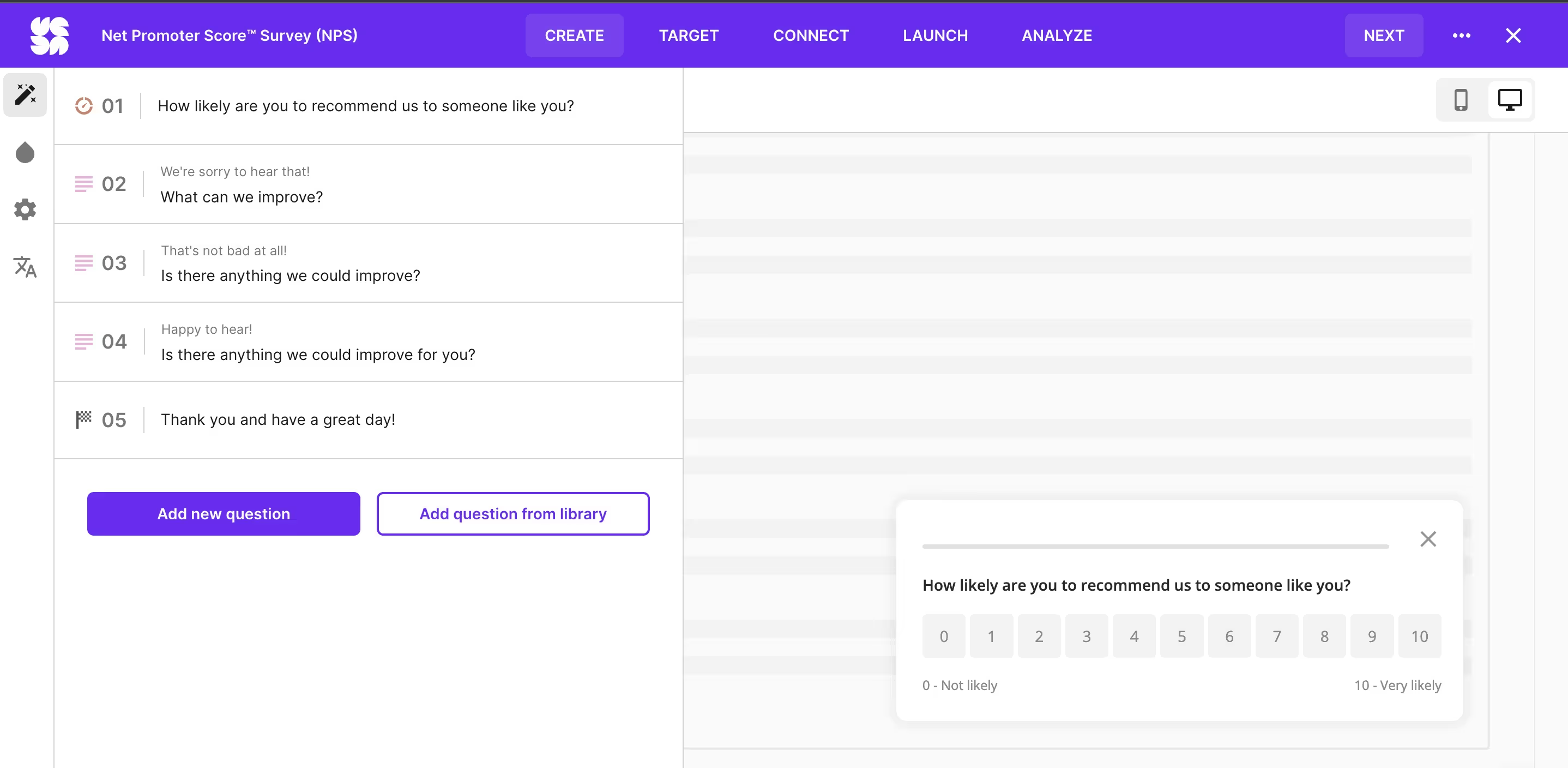
03 Add your branding
Make sure your feedback form reflects your brand identity. With Survicate, you have to do that with ease. For example, add your photo to form fields to make them more personalized or change color schemes to match your website or mobile app.
(Survicate helps to create mobile-friendly forms that are responsive to all screen sizes)
Many features are available – from removing the Survicate branding to changing the default language and layout. It will match your brand in every aspect.
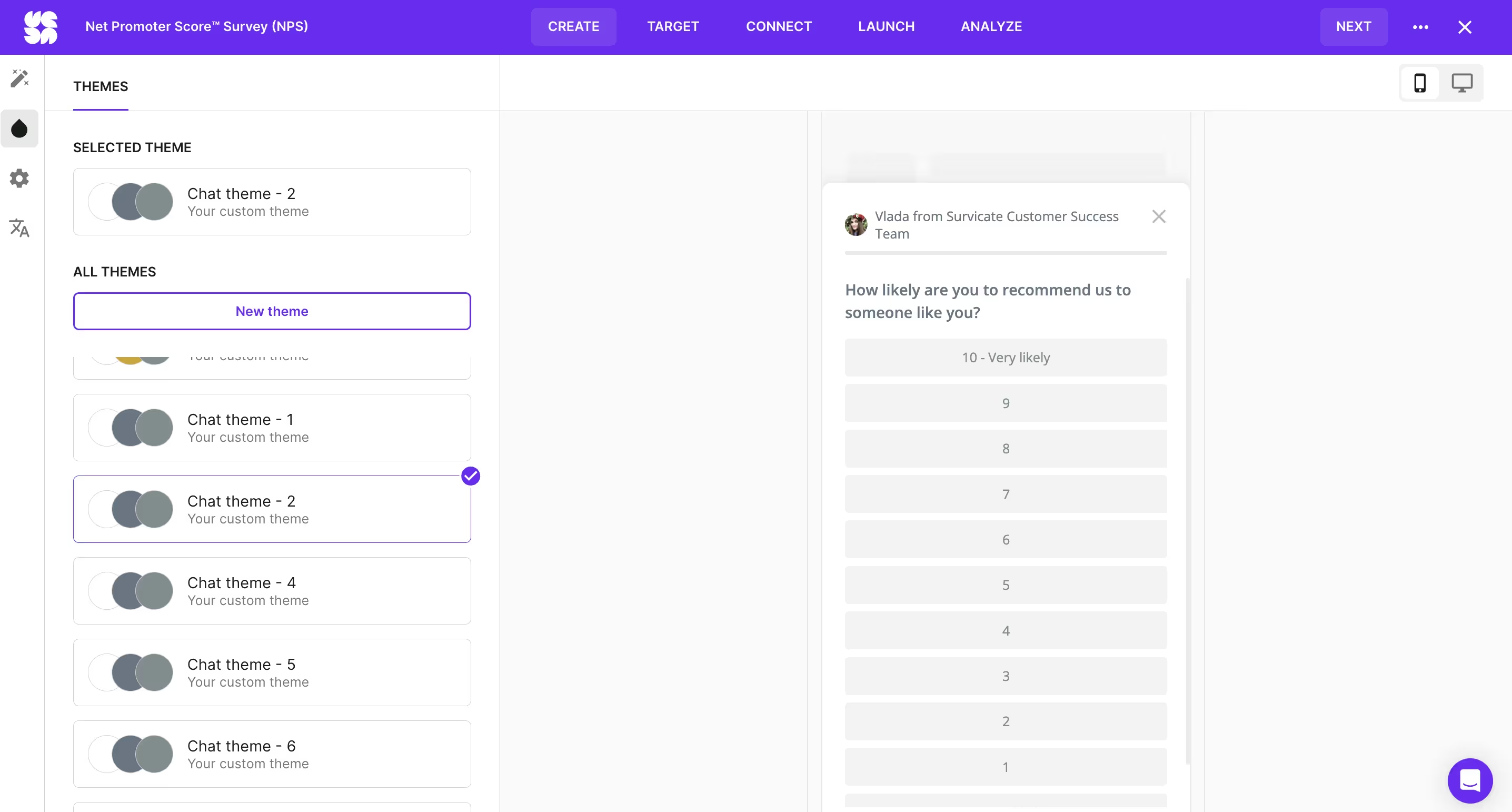
04 Choose your target audience
Survicate forms can be targeted to a specific audience. Thanks to that, you get more accurate results. In addition, you can specify where and when the form should be displayed.
05 Integrate the form to automate the feedback
You can connect Survicate to your favorite tools and create a powerful toolbox. For example, you can get instant alerts about responses via Slack, grow your Mailchimp list with online surveys, or trigger HubSpot workflows based on form responses. Isn't that handy?
06 Publish and analyze
Once you're happy with the results, it's time to publish your good feedback form. You can install it with Google Tag Manager, WordPress, and Segment (or insert the code manually). Through Survicate's interactive interface, you can track responses in real-time, export the results quickly, and turn customer feedback into action.
User feedback forms that simply work
To sum up – creating user feedback forms doesn't have to be a headache. On the contrary, it can (and should) be an enjoyable process that gives you valuable insights into your customers' needs.
With Survicate, you get everything you need to collect accurate feedback and quickly turn it into business value.
Take a look at the examples, select the template, and start collecting user feedback. Your efforts will pay off soon.









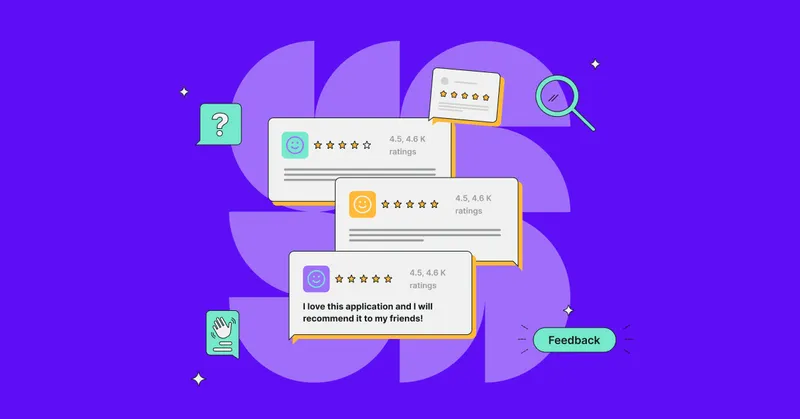
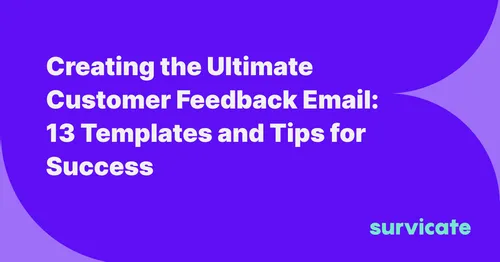
.png)



.svg)

.svg)



